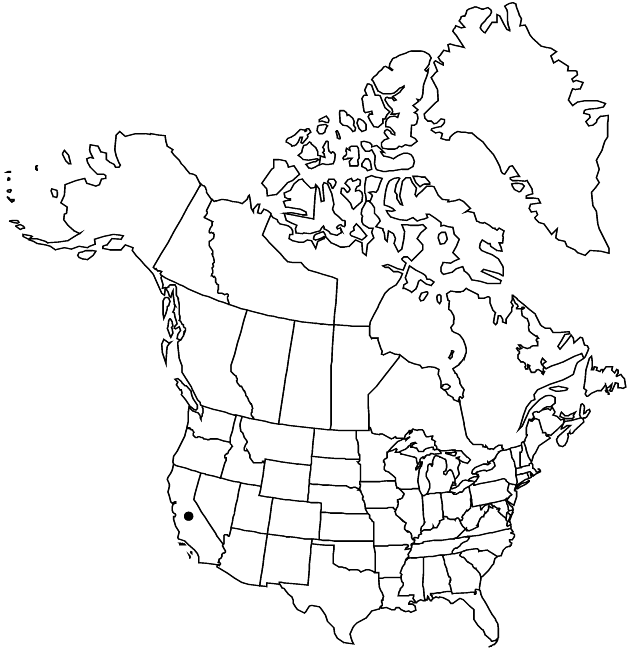Hazardia squarrosa var. grindelioides
Madroño 26: 122. 1979.
Basionym: Pyrrocoma grindelioides de Candolle in A. P. de Candolle and A. L. P. P. de Candolle, Prodr. 5: 350. 1836
Synonyms: Haplopappus squarrosus subsp. grindelioides (de Candolle) D. D. Keck
Treatment appears in FNA Volume 20. Treatment on page 448.
Revision as of 20:57, 29 July 2020 by imported>Volume Importer
Stems sparsely puberulent, often tomentulose proximal to heads. Leaves sparsely puberulent, not resinous. Involucres 8–12 mm. Phyllaries recurved, margins glandular (if at all), apices obtuse to acute, faces apically cinereous. Disc-florets 9–16; corollas 9–10 mm. 2n = 10.
Phenology: Flowering Jul–Oct.
Habitat: Chaparral in foothills, coastal mountains, and islands, usually with Quercus, Pinus, Arctostaphylos, Rhus, Heteromeles, Adenostoma, Ceanothus
Elevation: 100–1300 m
Distribution
Loading map...

Calif., Mexico (Baja California)
Discussion
Selected References
None.
Lower Taxa
None.
"fine" is not a number.
... more about "Hazardia squarrosa var. grindelioides"
introrse +
connate +
distinct +
herbaceous +
obtuse;acute +
scarious +
hirsute +
papillate +
green +
continuous +
decurrent +
1-nerved +
elliptic +
oblong-obovate;widely obovate +
coriaceous +
ribbed +
stigmatic +
reddish-brown +
persistent +
20;30 +
absent +
red-purple +
absent +
ampliate +
4-5-nerved +
dimorphic +
glabrous +
5mm;8mm +
staminate +
straight +
resinous +
cinereous +
stipitate-glandular +
distinct +
proximal +
1;5 +
bisexual +
dispersed +
Chaparral in foothills, coastal mountains, and islands, usually with Quercus, Pinus, Arctostaphylos, Rhus, Heteromeles, Adenostoma, Ceanothus +
singly +
indeterminate +
surrounding +
turbinate +
sessile +
alternate +
not resinous +
cauline +
puberulent +
spreading;erect +
triangular +
spinulose-dentate +
not scarious +
2-carpellate +
inferior +
attached +
anatropous +
persistent +
tough +
thick +
absent +
connate +
1-nerved +
persistent +
distinct +
herbaceous +
falling +
recurved +
oblong +
unequal +
Madroño +
1979 +
pistillate +
absent +
epaleate +
pitted +
concave;usually flat;conic +
fibrous +
exalbuminous +
modifed +
1;2 +
Illustrated +
alternate +
branched +
erect +
proximal +
triangular +
2-branched +
glabrous +
Hazardia squarrosa var. grindelioides +
Hazardia squarrosa +
variety +
tubular +
longer +
perennial +